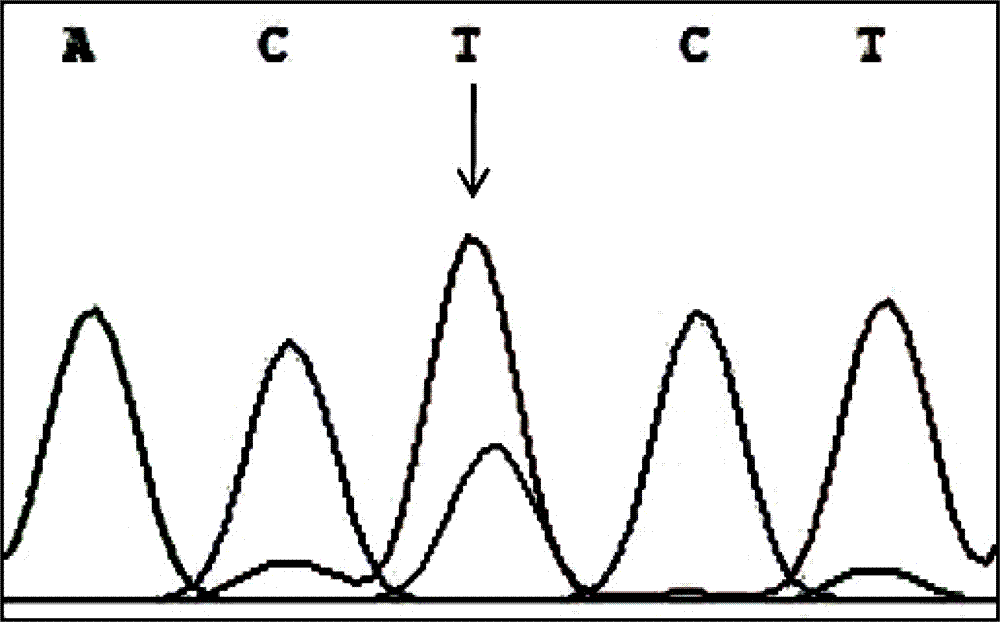PCR-RFLP method for detecting single-nucleotide polymorphism of type II diabetes susceptibility gene CREB1 and application thereof
A PCR-RFLP, single nucleotide polymorphism technology, applied in the field of molecular biology detection of human diseases, can solve the problem that the genetic variation of type II diabetes has not yet been reported, and achieves easy popularization and application, high accuracy, low cost effect
- Summary
- Abstract
- Description
- Claims
- Application Information
AI Technical Summary
Problems solved by technology
Method used
Image
Examples
Embodiment Construction
[0037] The present invention will be further described in detail below, which is an explanation of the present invention rather than a limitation. Unless otherwise specified, the routine experimental conditions or the conditions suggested by the manufacturer's instruction were followed.
[0038] For the detection of type 2 diabetes susceptibility genes CREB1 The PCR-RFLP method of single nucleotide polymorphism is characterized in that: the blood genomic DNA of diabetic patients and normal people is used as a template, and the primer pair P (F, R) is used as primers, and PCR amplification CREB1 Gene, and then use restriction endonuclease to digest it, and then through electrophoresis detection, the single nucleotide polymorphism of the sample to be tested can be accurately identified; that is, in Taq DNA polymerase, buffer environment, Mg ++ In the presence of dNTPs, use polymerase chain reaction primers to amplify P by PCR, then digest it with restriction endonuclease, and...
PUM
 Login to View More
Login to View More Abstract
Description
Claims
Application Information
 Login to View More
Login to View More - R&D Engineer
- R&D Manager
- IP Professional
- Industry Leading Data Capabilities
- Powerful AI technology
- Patent DNA Extraction
Browse by: Latest US Patents, China's latest patents, Technical Efficacy Thesaurus, Application Domain, Technology Topic, Popular Technical Reports.
© 2024 PatSnap. All rights reserved.Legal|Privacy policy|Modern Slavery Act Transparency Statement|Sitemap|About US| Contact US: help@patsnap.com










